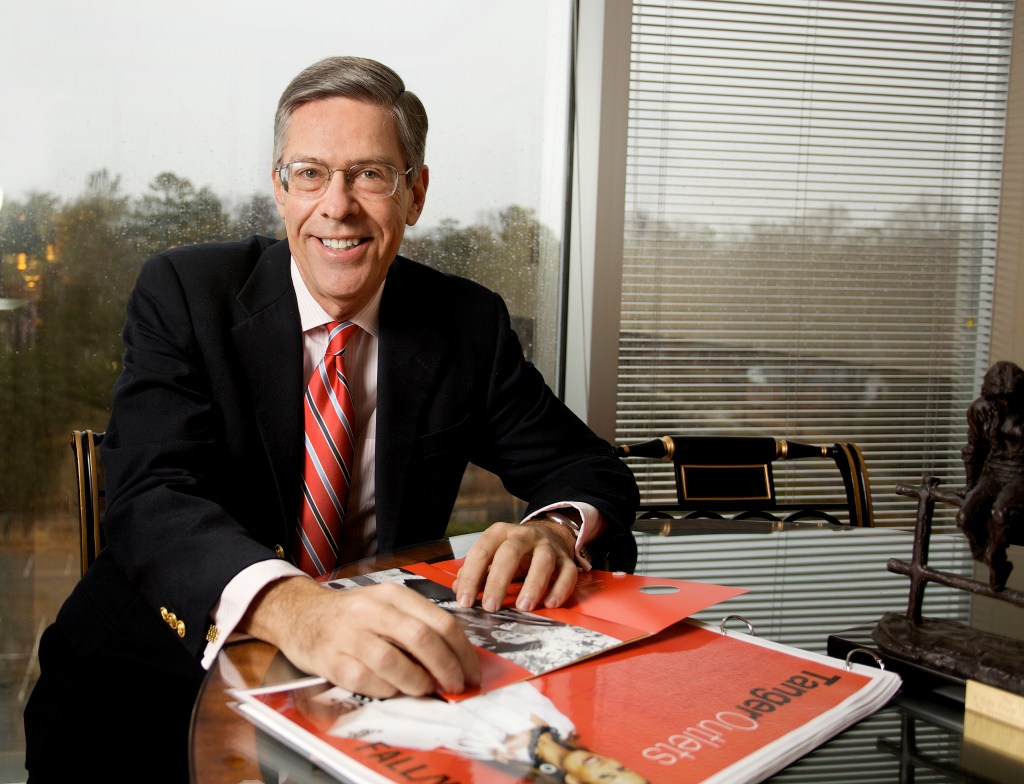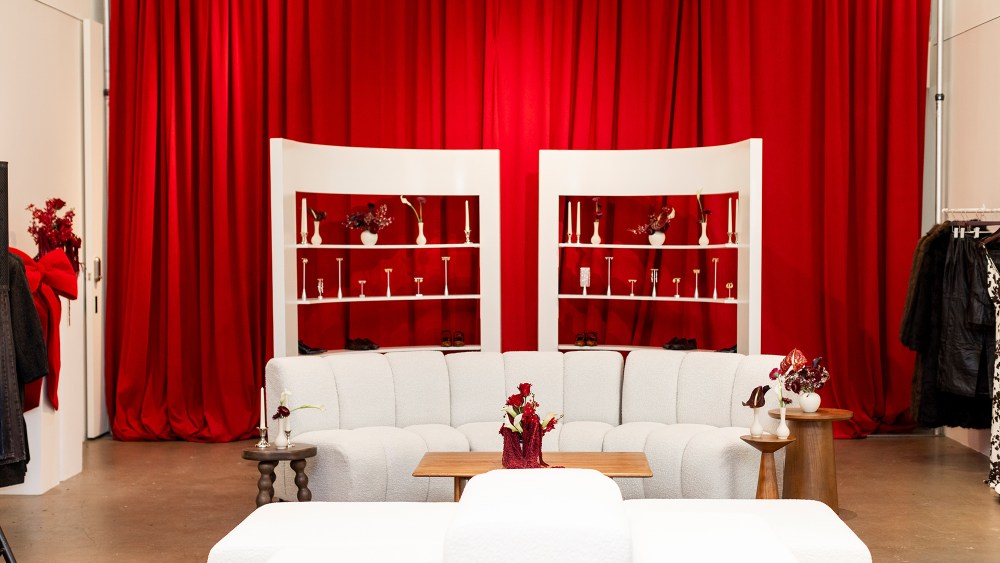Steven B. Tanger, a pioneer in the outlet center industry, is transitioning from executive chairman of Tanger Outlets to non-executive chairman, thereby relinquishing his day-to-day involvement in the company while maintaining his position on the board.
The change is effective Jan. 1.
“I have decided at the end of this year I will be rewiring. I’m not using the term retiring,” the 75-year-old Tanger told WWD in an interview.
“It’s been humbling and gratifying that I have gotten multiple calls to serve as senior adviser or mentor to younger CEOs, in most cases with private equity and venture capital firms, not public companies. They seem interested in my experience.”
Tanger, who served as chief executive officer of Tanger Outlets for 12 years until being succeeded by Stephen Yalof in December 2020, has been on the board since the Greensboro, N.C.-based company was listed on the New York Stock Exchange 30 years ago. The real estate investment trust (REIT), which owns and/or manages 37 upscale, open-air outlet centers, including Tanger Outlets Nashville opened just last month, was founded 43 years ago by Steve Tanger’s late father.

Tanger announced his career change on Monday, when the company also disclosed strong financial results for the third quarter ended Sept. 30, and raised its outlook for the year. Last October, the board approved a 6.1 percent increase in the dividend on common shares from 98 cents to $1.04 per share on an annualized basis, and later this month, to update its corporate identity, the company is changing its official name from Tanger Factory Outlet Centers to Tanger Inc.
Net income available to common shareholders was 26 cents per share, or $27.2 million, compared to 22 cents per share, or $23 million for the prior-year period.
Funds from operations (FFO) available to common shareholders was 50 cents per share, or $55.8 million, compared to 47 cents per share, or $51.7 million for the prior-year period.
Occupancy was 98 percent on Sept. 30, compared to 97.2 percent on June 30, and 96.5 percent on Sept. 30, 2022.
Same-center net operating income increased 7.6 percent to $87.9 million last quarter from $81.7 million in the year-ago quarter, driven by higher rental revenues from increased base rent and expense recoveries as well as out-of-period rent collections.
Average tenant sales were $437 per square foot for the 12 months ended Sept. 30, a 2 percent decline from $446 for the 12 months ended Sept. 30, 2022.
The company now projects net income of 93 cents to 97 cents per share, versus the earlier forecast for 90 cents to 97 cents per share.
On the company’s future, Tanger said, “We are looking at other types of opportunities to invest. Fortunately, we are good stewards of our investors’ capital. We did not over-leverage our balance sheet. We actually have one of the strongest balance sheets in the REIT industry. We have the cash to be opportunistic. Should we decide to make any acquisitions, we have the team that can add value. We’re going to go on the offense.
“There are lots of different opportunities for the company — and the cash, the financing, and the credit to be able to execute those growth plans,” Tanger said, citing the company’s two recent property management agreements in Palm Beach, Fla., as an example of a growth strategy.
“We have skills in buying, developing and managing assets, so we’re a fully integrated real estate company. Since we started 43 years ago, we have either built or bought 70 shopping centers and have sold 33 non-core assets over time. We now have the 37 we feel are the strongest with the highest growth potential in our portfolio.
“Our skill sets allow us to look at different types of retail. I don’t think we would diversify outside retail to multifamily, warehouse or commercial office buildings, which require different skill sets from ours, but there may come a time when we decide a good investment would be to buy other types of open-air retail.”
The Tanger company has roots back to 1919 when Steve Tanger’s grandfather launched Tanger Creighton, a former manufacturer of shirts and trousers for the military. The Wallingford, Conn.-based business also sold dresses and sport shirts to retailers.
“My grandfather came up with a clever idea to convert part of the warehouse into an outlet store,” said Tanger. “The merchandise displays for selling were two ladders with pieces of wood in between. Employees were given cards and they could bring their friends there on Saturday to shop. He told me with a twinkle in his eye that Saturday’s sales, which were all cash, met the payroll from the week before. I believe it was the first outlet store.” The company ultimately moved to New Haven, Conn., and later to North Carolina in 1957.
Outlets sprang up, each situated by the warehouses of each different brand manufacturer. So the Tangers decided it would make sense to cluster different brand outlets in a single location and in 1981, created the first ground-up outlet center, a 35,000-square-foot facility in Burlington, N.C., which housed seven outlets including Bass, Liz Claiborne, Hanes, Ship ‘n Shore and Van Heusen. “That’s how we got started,” Tanger recalled. “We had a hunch consumers would want to buy directly from the world’s largest manufacturers and designers, cutting out the middle person. That was the twist we had. Consumers loved it.
“Most of our tenants are sensitive and wanted to put their outlet stores a certain distance from their department stores and specialty stores. So the outlets were spaced a little bit away from the city. In return for traveling 10 to 15 minutes, you got great values every day.”
Twelve years after starting Tanger Outlets, the company went public, in May 1993. “It was a dream of every entrepreneur to be successful and trade on the New York Stock Exchange,” said Tanger. “When my father and I and our families were on the exchange ringing the closing bell, the exhilaration of watching the first 100 shares of our stock trade was memorable. It traded at $22.50.
“We split the stock two times. We’re trading now at about $24, so effectively, it would be at $96.”
His most challenging period was the pandemic. “We went from 98 percent occupied to zero percent occupied, literally overnight,” Tanger said. “We’re very proud that we did not lay off any colleagues. Everybody kept their job. Steve Yalof and I cut our pay to zero. Our board and some senior executives cut their pay in half, so we could keep everybody employed, not miss a paycheck and keep their insurance.
“We worked with our tenants as partners,” Tanger added. “We gave them a nine-month interest-free loan. And they agreed, after the nine months they would pay us back and 99 percent of our tenants paid us back on time. To this day, they remember that we acted as a good partner. Probably 90 percent took the loan.
“I don’t think we’ve ever been, except briefly with COVID[-19], less than 90 percent occupied. I’ve said for years, in good times, people like a bargain, and in tough times they need a bargain. The outlets provide a bargain in any economic cycle.
“There were headlines three, four years ago screaming ‘retail is dead.’ Now retail brick-and-mortar retail is alive and well and we’re doing business with many digitally native companies that really couldn’t make a profit, or a significant profit, online,” said Tanger. “Anywhere from 30 to 40 percent of the product is returned. The reverse logistics is very expensive.”
Over the past year, brands and retailers have been streamlining inventories. Even with that, inventories at outlets, according to Tanger, “remain robust.” He said Tanger gets weekly feedback on inventory levels, and staffing levels, at the outlets.
In widely varying degrees, brands produce inventory specifically for their outlets. “Most of our tenants make product in the same factory with the same fabrics to the same specifications, and most importantly with the same brand name,” as with their traditional, full-price retail channels, said Tanger. “There’s not a single CEO of any of the 700 companies we do business with that will ruin their reputation by a product being inferior in any distribution chain.
“The biggest challenge for the companies we do business with as they’re successful, they think they can raise prices which usually leads to lower sales and profits,” Tanger said. “As long as the manufacturers and retailers stay true to the philosophy of a direct outlet store, where consumers can buy direct, the industry has got a great future.”



